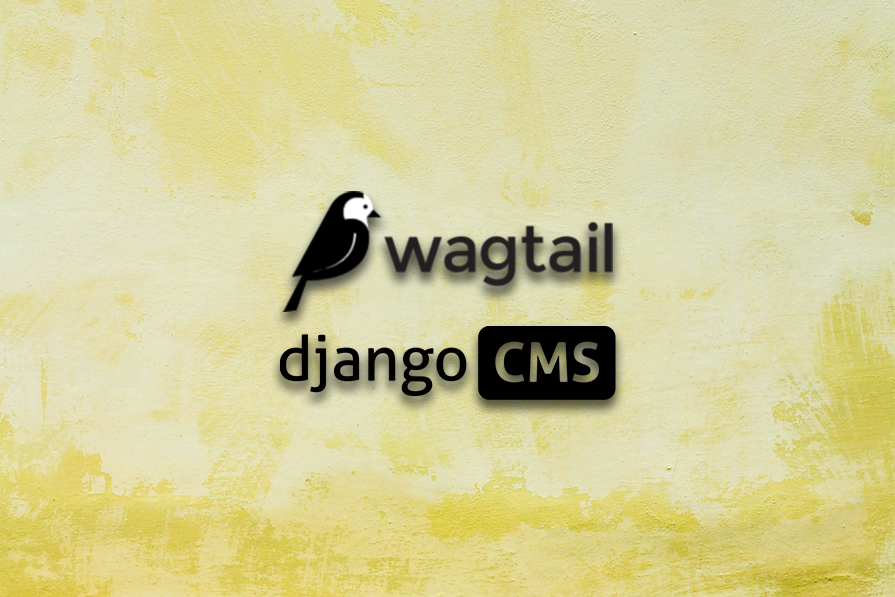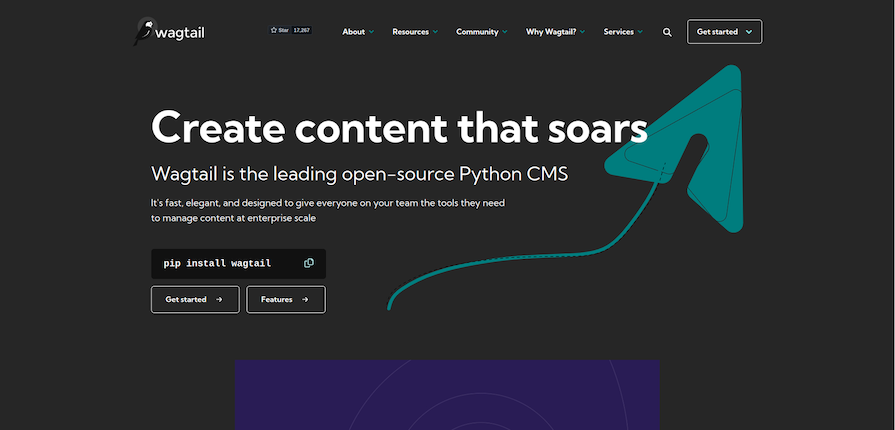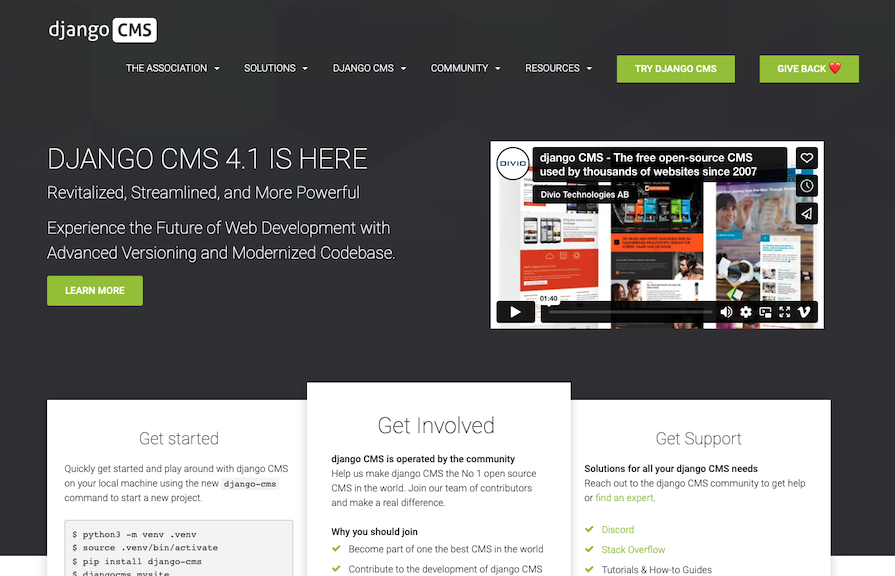
When building websites with Python, there are several frameworks you can use, one of the most popular being Django. You can either build your site from scratch with the Django framework or use a content management system (CMS).

Selecting the ideal CMS for Django can be challenging as there are so many options, like Mezzanine, ButterCMS, Pinax, Hygraph, and others. Amongst these options, two popular options are Wagtail and Django CMS. Each offers plenty of unique features and seamless integration with Django, but caters to slightly different needs.
In this article, we will look at Wagtail and Django CMS, covering details like their features, performance, and how they compare to each other.
The Replay is a weekly newsletter for dev and engineering leaders.
Delivered once a week, it's your curated guide to the most important conversations around frontend dev, emerging AI tools, and the state of modern software.
Building a site from scratch gives you lots of flexibility as a developer, allowing you to customize the website exactly the way you need it. However, it can also be time-consuming to build and maintain, and it’s more challenging to collaborate with non-technical team members.
Building out a website’s frontend, working on responsiveness for all devices, and addressing other important features like SEO can be time-consuming. That’s all before we even talk about building out the backend with Django.
Meanwhile, a CMS allows you to create, manage, and modify your website content without specialized technical knowledge (although you need some technical knowledge for Django CMS). A CMS provides a centralized interface for authors, editors, and publishers to collaborate and control the production, editing, and distribution of digital content.
Furthermore, while Python is one of the top programming languages that web developers use to build websites, it also comes with its unique challenges. Although these challenges are not problems per se, here are some things you need to pay attention to in Python:
As a result, leveraging a CMS with a Python framework like Django can be a more strategic and practical option than building your website from scratch. This is because it not only requires less technical expertise in coding but also improves collaboration and work efficiency and increases scalability and flexibility.
Wagtail is a full-fledged open source CMS framework built on top of Django that focuses on flexibility, simplicity, and an intuitive UX. It provides a flexible and scalable platform for building custom CMS solutions:

With Wagtail, you can create complex page hierarchies with rich content blocks while enjoying a user-friendly editing experience. Its clean and modern interface make it an ideal choice for content-focused websites such as blogs, news websites, corporate websites, and more.
Some of Wagtail’s unique features include:
person block with first name, surname, and photograph sub-blocks) to completely custom components with their own editing interface. StreamField’s content editing model is best suited to pages that don’t follow a fixed structure, such as blog posts, news stories, or testimonialsOther features include image cropping and upload, form builder, integration with existing Django apps, and more.
Django CMS is also an open source CMS for Django. It offers a modular approach, allowing you to create reusable content components and customize templates efficiently:

Django CMS leverages a core set of functionalities that you can extend through a vast library of plugins. This plugin system empowers developers to tailor the CMS precisely to their project’s needs.
While the Django CMS interface might seem less streamlined as compared to Wagtail, it offers a high degree of customization and control. If you prioritize scalability and extensibility, then Django CMS is a good choice for you.
Some of the standout features of Django CMS include:
Other features include free content structuring tools (such as menus and categories), full-text search, a sitemap generator, easy integration with Django apps, and so on.
Having looked briefly at the overviews of Wagtail and Django CMS, we will now look at how both options compare with each other in various areas.
Wagtail has a sleek, modern interface that simplifies content management tasks. Its editing feature allows users to edit content directly on the page, enhancing productivity.
Django CMS offers a customizable dashboard with drag-and-drop functionality for arranging content elements. It has a more traditional interface.
Wagtail shines with its drag-and-drop interface for content blocks, making content creation easy to implement. It boasts a lower learning curve for editors as the abstractions are simple, and the documentation is easy to navigate and understand.
The learning curve in Django CMS is a bit steeper in comparison. It requires experience for non-technical users due to its plugin-based approach. Django CMS offers a more traditional text editor experience, which can be supplemented with plugins for advanced editing needs.
Wagtail provides a flexible content modeling system, enabling developers to define custom content types effortlessly. It offers a hierarchical page structure, making it easy to organize content in a tree-like format.
Meanwhile, Django CMS offers a robust plugin ecosystem, allowing developers to extend functionality seamlessly.
Both Wagtail and Django CMS are known for their great performance. Both prioritize search engine optimization (SEO) by offering features like customizable metadata, XML sitemap generation, and clean URL structures.
Wagtail’s performance benefits from its optimized database queries and caching mechanisms. It supports caching through Redis and also leverages Elasticsearch to provide a more advanced search for content.
Django CMS is designed to scale efficiently, making it suitable for high-traffic websites. It offers caching options to reduce performance bottlenecks and supports advanced caching strategies using tools like Django Redis. Also, its modular architecture allows developers to optimize performance by selectively caching content components.
With over 17.3k stars on GitHub, Wagtail has gained popularity in recent years and boasts a large and rapidly growing community. The benefits of this big community translate to great resources and readily available tutorials for your development process. The framework’s documentation isn’t left out either, as it is constantly updated with any new advancements.
Django CMS, on the other hand, has 9.9k stars and a well-established community. The Django CMS community has been around for a longer time than Wagtail, so it’s larger with great support and resources.
Let’s recap the comparison between Wagtail and Django CMS in a table:
| Wagtail CMS | Django CMS | |
|---|---|---|
| Learning curve | Easy | Harder learning curve |
| User interface | Modern and intuitive interface | Traditional and functional interface |
| Headless API | Built-in REST API | Not built-in/possible via a third-party package (like djangocms-rest-api) |
| Integration with Django Apps | ✅ | ✅ |
| Approval Workflow | ✅ | ✅ |
| Unique Features | StreamField and FormBuilder | Highly extensible |
| Version Control | ✅ | ✅ |
| GitHub | Over 17.3k stars | Over 9.9k stars |
You can use this table to quickly compare the two CMS options at a glance. This may make it easier to choose a CMS for building a Python website with the Django framework.
Choosing the “right” CMS for your needs can be a bit difficult, especially when you haven’t tried either or have only tried one. Hopefully, this article will aid your decision. However, it’s often good to try out both yourself to make a better-informed decision.
While both CMS platforms are excellent options, Wagtail takes the crown for projects prioritizing ease of use and a streamlined content editing experience. Its intuitive interface and focus on content blocks make it ideal for content-driven websites.
However, if you require a highly customizable solution with a vast plugin ecosystem, Django CMS stands out. For developers comfortable with extending functionalities and features, Django CMS offers unmatched control and scalability.
Choosing between Wagtail and Django CMS depends on the specific requirements of your project and your team’s technical expertise.
If you prioritize a clean, user-friendly interface and flexible content modeling, Wagtail may be the better option. On the other hand, if you require extensive customization capabilities and a modular approach to content management, Django CMS might better suit your needs.
No matter which one you choose, Wagtail and Django CMS are capable CMS options that empower developers to create great and powerful web experiences with Django and Python.

Large hosted LLMs aren’t always an option. Learn how to build agentic AI with small, local models that preserve privacy and scale.

What storylines defined 2025 in frontend development? We power rank them all, from AI advancements to supply chain attacks and framework breakthroughs.

Learn how to style React Native apps with Tailwind using NativeWind v4.

A practical guide to the best React Native UI libraries in 2026, with comparisons across performance, theming, accessibility, and Expo compatibility.
Would you be interested in joining LogRocket's developer community?
Join LogRocket’s Content Advisory Board. You’ll help inform the type of content we create and get access to exclusive meetups, social accreditation, and swag.
Sign up now